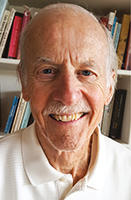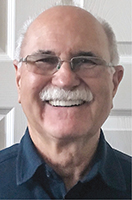
Mobilizing Community Resources
After a fatal shooting and hostage crisis inside their high school, the authors discovered the value of integrating home, school and civic affairs
BY PETER W. PILLSBURY SR. AND RICHARD A. LOVEALL/
School Administrator, April 2019

|

|
Pete
Pillsbury |
Richard
Loveall |
On May 1, 1992, three students and a teacher were shot and killed, 10 others were seriously injured and 80 were held hostage for eight hours at Lindhurst High School, located 45 miles north of Sacramento, Calif.
We were administrators at the district level (Pillsbury the superintendent, Loveall the deputy superintendent) at the time. It was one of the nation’s first school shootings, taking place seven years before Columbine, in what now have become all-too-regular mass shootings inside a school.
It had begun as any ordinary, high-energy day in the 11,000-student Marysville Joint Unified School District. The two of us had just gathered for an afternoon strategy session with our leadership team when the phone on the conference room wall rang. There was a frantic voice on the line screaming, “There is shooting at Lindhurst High School.”
We could not possibly realize how this call would change our lives, challenge all the positive developments the district had accomplished and teach us more than we wanted to know about managing a terrible crisis.
Looking back, more than a quarter century later, we believe that much of the work we had done prior to the tragedy to integrate home, school and community with the Marysville Joint Unified School District was our foundation for navigating this crisis. This included the shared communitywide vision for the district, the parent advisory group that met monthly with the superintendent and the close alliances with the county’s major support agencies. In the aftermath, we learned quickly we needed the expertise of many others.
Now that safety and security across the school system has become, by necessity, one of every superintendent’s highest priorities, we believe there may be practical value in recounting some of the many decisions we had to make.
» Synergy.
From the beginning of our tenure, we had worked with passion to bring together stakeholder groups behind a shared vision of excellence for the schools in Marysville. In retrospect, this provided us with a strong foundation to face the aftermath of a terrible crisis.
We had collaborated extensively with the community to focus on what students ought to know and be able to do upon graduation. This included a senior-year project for each student, monitored by a community panel. The parent advisory group had the ear of the superintendent monthly. Business and political leaders felt connected.
Had we not had this strong community relationship, it is doubtful we could have managed as well as we did.
Already in place was a countywide coordinated services committee chaired by the deputy superintendent. Around the table at regular meetings were representatives of county agencies responsible for social services, juvenile probation and public health, as well as an elected county board supervisor.
The exception was the sheriff’s department, an oversight. Law enforcement should have been at the table. This group proved to be critical in the hours, days and months following the tragedy.
Following the arrest of the shooter, the committee had mobilized by midnight, the same day. Members gathered at the high school and a coordinated action plan was formulated without “turf issues.” If something needed to be done, an agency stepped forward to get it accomplished. Things moved swiftly. By 10 a.m. the next day, three emergency counseling centers opened their doors in our community to crowds of needy clients.
» Communication.
In the aftermath, we learned a lot about communication. Even in this age of instantaneous connections, face-to-face personal contact remains the best way to facilitate effective communication. Safety readiness plans at the school and district levels should include the best communication technology available as a first stage of contact. Yet small-group and one-on-one meetings within the community should be a close second means to reliably hear and share ideas.
The news media poses a different challenge. Before the hostages were freed, we had decided to funnel all communication with reporters through the superintendent. We stuck to this decision throughout the weeks of bombardment from the press seeking access to the Lindhurst campus.
We were firm about all campuses being off limits to the media during school hours. Had we not stood our ground, the educational process would have been radically disrupted.
» Empathy.
Our county, one of the poorest per capita in California, has a diverse population. We quickly recognized how important empathy and respect for diversity plays in the midst of emotional situations.
One of us (Loveall) met with local Hmong clan leaders soon after the tragedy. The following Saturday, a Hmong shaman sacrificed a chicken outside the targeted building to cleanse it. That enabled Hmong students to resume classes.
A year later, a Native American ceremony was held at the high school to dedicate individual family shrines for the four slain victims. Each ceremony was organized carefully by a coordinating committee to avoid conflict with the spiritual values of the participating families.
The depth of trauma among school staff members was something we were unprepared to handle. We were advised through national data on mental health that the school would likely lose half its staff through requested transfers and resignations within five years.
Though we scoffed at the idea, half of the Lindhurst staff indeed was replaced over the ensuing four years. If we had been more attentive to the needs of teachers and other school-based staff, perhaps we could have averted this significant impact.
» External assistance.
Getting help from crisis experts and human support agencies outside the school district was essential. Some of the community’s emotional rage, the need to blame someone for the horrific acts, was aimed immediately at the school district. To quell the misinformation, the district organized a community meeting in the school’s gym two days after the tragedy. From the outset, we could see there were a lot of angry people, many of whom blamed the school staff for what had occurred.
Based on advice from Tom DeLapp, a communications expert with the Association of California School Administrators, the superintendent led the meeting rather than turning to the principal, who had been through too much trauma already. DeLapp also suggested the presence of a respected local pastor, which was a great decision. Eventually the crowd mellowed. DeLapp’s counsel proved to be helpful.
Once Lindhurst High School reopened two weeks after the tragedy, we thought we could return our focus to the school district’s mission of providing each student with a meaningful learning experience every day. That became impossible.
As soon as the school reopened, we received multiple bomb threats over two weeks. We evacuated the school each time, and the sheriff’s department brought in bomb-sniffing dogs. Nothing was ever found. The California Highway Patrol told us, based on experience, the threats would continue unless we refused to evacuate the school. The superintendent had to make a difficult decision.
After what had occurred, the community was on edge. To affirm that a bomb threat had been received and then not evacuate the school was a huge risk. With the encouragement of law enforcement, the decision was made not to evacuate when the next threat occurred. The threats promptly ceased.
Just as we thought healing was well on its way, we were presented with another disruption: a lawsuit by the controversial plaintiff attorney Melvin Belli, known cynically as known as “the king of torts,” representing some of the injured students. Belli and his team of attorneys and investigators ran circles around our insurance carrier’s legal team of one.
In the end, based on fabricated stories inadequately challenged by our team, a jury found the district partially guilty and liable beyond the limits of our insurance, which resulted in several hundred thousand dollars in liability.
This unfortunate judgment, which we knew was based on false evidence, was emotionally and fiscally difficult for us. However, we had the complete support of the seven members of the school board, who regularly attended the trial.
The lesson: Don’t take anything for granted. Bring together the best advisers you can have covering the legal issues. Do not depend just on your insurance carrier to protect you and the district. Had we employed a team of legal experts to adequately defend the district, this emotional and fiscal hardship might not have occurred.
Crises of this magnitude ask much of district leaders, from the board of education to the site leadership. As the legal and emotional aftermath of the tragedy engulfed us, we knew we had to stay focused on our mission and vision. As a result, the district eventually came together, and we doubled down on our path toward providing an excellent education.
Enduring Memories
In the ensuing months, we introduced a vigorous, data-driven selection process for hiring staff, identified and implemented best practices for teaching and learning, and stepped up our staff development at all levels. One mark of our success was that staff from other school districts in the state asked to visit to observe what we were achieving. The results helped to re-instill pride in the community.
In retrospect, we wish we had done more to honor and memorialize the heroes in this tragedy: The student who gave his life protecting a fellow student, the hostages who helped talk the shooter into surrendering, and the teacher who hid her students in a classroom. Honor the heroes.
Some 27 years later, we continue to mourn the lives that were taken on that horrific day. The memories of all that surrounded it are forever etched in us.
PETER PILLSBURY, former superintendent in Marysville, Calif., is president of TargetSuccess in Oregon House, Calif.
RICHARD LOVEALL is former deputy superintendent of the Marysville Joint Unified School District.